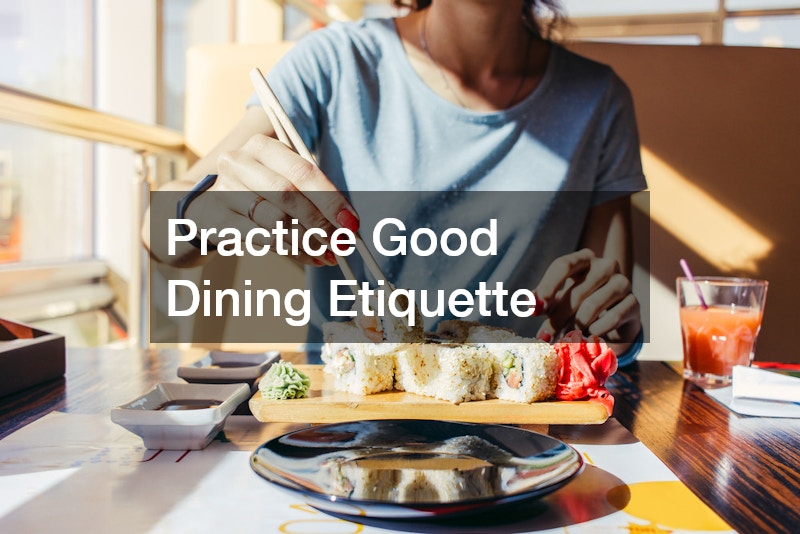Dining out at a restaurant is more than just a way to satisfy hunger—it is an experience that combines ambiance, taste, service, and social connection. Whether you are visiting a local favorite or exploring a new fine-dining establishment, making the most of your time at a restaurant requires more than simply choosing a dish from the menu.
Plan Ahead
One of the first steps in enhancing your restaurant experience is planning ahead. Reservations are essential, especially for popular spots or weekend dining, to avoid long wait times and disappointment.
By booking ahead, you can select your preferred seating, such as a quiet corner or a table with a view, which can significantly impact your enjoyment.
Researching the menu beforehand is another effective strategy. Many restaurants now post their menus online, allowing you to explore options, check ingredients, and even consider dietary restrictions. This preparation reduces decision-making stress and ensures you can make a choice that suits both your taste and nutritional preferences. Additionally, reading reviews and ratings from previous diners can provide insight into must-try dishes or any potential issues to be aware of, such as inconsistent service or long wait times.
Timing also plays a crucial role. Arriving at off-peak hours can provide a more relaxed atmosphere, shorter service times, and better attention from the staff. If you’re celebrating a special occasion, coordinating with the restaurant in advance allows for thoughtful touches, such as custom desserts or decorations, which can elevate the experience.
Engage With the Menu
A major aspect of enjoying a restaurant visit is engaging fully with the menu. Take the time to explore the range of offerings, from appetizers and mains to beverages and desserts. Many restaurants offer seasonal specials or chef’s recommendations that highlight unique flavors or locally sourced ingredients. Sampling these dishes can introduce you to new culinary experiences that might not be available elsewhere.
Understanding portion sizes is also important. Some restaurants serve generous portions that could be shared, while others provide smaller, tasting-style options. Consider pairing dishes or ordering a combination of small plates to maximize variety without overeating. Don’t hesitate to ask the staff for recommendations or clarifications about ingredients and preparation methods—they are trained to enhance your dining experience and can guide you toward the best options.
Pairing food with the right beverage further elevates the meal. From wine and craft beers to non-alcoholic options, matching flavors thoughtfully can enhance both taste and aroma. Even simple drinks, like sparkling water or herbal teas, can complement specific dishes and refresh the palate between courses. Being attentive to these details helps you engage all your senses and deepens your appreciation for the culinary craft.
Appreciate the Ambiance
The ambiance of a restaurant greatly influences the overall experience. Lighting, music, décor, and seating arrangements all contribute to how comfortable and relaxed you feel. Choose a venue that aligns with your mood and purpose—whether it’s a quiet, intimate dinner, a lively gathering with friends, or a casual family outing.
Paying attention to small details, such as table settings and cleanliness, also reflects the establishment’s quality. A well-maintained space indicates care and professionalism, making your visit more enjoyable. Savor the atmosphere, observe the staff in action, and take note of the little touches, like fresh flowers or thoughtfully folded napkins, that demonstrate attention to detail.
Social interaction is another element of ambiance. Engage in meaningful conversation with your dining companions and immerse yourself in the moment. Avoid distractions, such as excessive phone use, to fully enjoy both the food and the company. This mindful approach transforms a simple meal into a memorable experience that leaves a lasting impression.
Practice Good Dining Etiquette
Proper etiquette is often overlooked but plays a critical role in a positive restaurant experience. Being courteous to both staff and fellow diners contributes to a respectful and pleasant environment. Simple actions, such as greeting servers politely, using appropriate table manners, and waiting your turn when sharing dishes, demonstrate consideration.
Tipping is another important aspect of dining etiquette, reflecting your appreciation for service. Understanding local customs and expected tipping practices ensures that you acknowledge the effort of the staff appropriately.
Communicating clearly and respectfully is equally important. If there is an issue with your order or the service, address it politely. Most restaurants are eager to resolve concerns promptly and effectively, enhancing the overall experience. Practicing these etiquette habits not only benefits you but also contributes to a culture of respect and enjoyment for all diners.
Making the most of your restaurant experience involves thoughtful preparation, active engagement with the menu, appreciation of ambiance, and adherence to good dining etiquette. Each aspect—from planning ahead and researching the menu to enjoying the atmosphere and practicing polite behavior—contributes to a memorable and satisfying visit.




